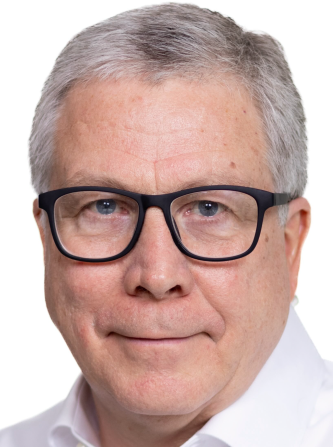MARVEL Distinguished Lecture - Hannes Jonsson
It will take place on Tuesday November 11, 2025, 14:00.
Practical details
- In-person participation: room MED 2 1124 (Coviz2), EPFL
- Remote participation: Zoom link

Calculations of excited electronic states using saddle point searches and self-interaction corrected density functionals, with comparison to neural-network selective configuration interaction
Hannes Jónsson
University of Iceland
Calculations of Rydberg and charge-transfer excited states based on variational optimisation of orbitals in state specific density functional calculations of molecules and defects in solids are presented. The method is based on the generalised mode following (GMF) saddle point search algorithm [1] and direct optimisation as implemented in the GPAW software for condensed matter simulations [2] where the orbitals are represented with plane waves or a real space grid. The GMF method is used to converge on a saddle point of a given order on the electronic energy surface representing an excited state. The values of excitation energy obtained using generalised gradient and meta-generalised gradient functionals are found to be in remarkably good agreement with experimental estimates and results of higher level calculations [3,4]. Even better results are obtained by applying scaled self-interaction correction to the energy functionals.
Alternatively, reference values are obtained in selective configuration interaction (CI) calculations where a convolutional neural-network is used to identify the important Slater determinants [5]. As an example, published results of full CI calculations of NH3, N2, H2O and propane molecules are reproduced with five to seven orders of magnitude fewer Slater determinants selected by the neural network. Faster convergence is obtained by optimising the Hartree-Fock orbitals for the target excited state.
1. Y.L.A. Schmerwitz, G. Levi and H. Jónsson, J. Chem. Theory Comput. 2023, 19, 3634.
2. J. J. Mortensen et al., J. Chem. Phys. 2024, 160, 092503.
3. A.E. Sigurdarson, Y.L.A. Schmerwitz, D.K.V. Tveiten, G. Levi and H. Jónsson, J. Chem. Phys. 2023, 159, 214109.
4. A.V. Ivanov, Y.L.A. Schmerwitz, G. Levi and H. Jónsson, SciPost Physics 2023, 15, 009.
5. Y.L.A. Schmerwitz et al., J. Chem. Theory Comput. 2025, 21, 2301.
About the speaker
Prof. Jónsson received his B.S. degree in Chemistry from the University of Iceland in 1980, and a Ph.D. at the University of California San Diego in 1985. After a two-year post-doc at Stanford, he became an assistant/associate/full professor at University of Washington in Seattle, and in 2000 became professor at the University of Iceland. He has been a visiting professor at the Technical University of Denmark, SLAC/Stanford, Aalto University, Leiden University and University of Oxford. Prof. Jónsson has developed several computational methods, including methods for finding saddle points on multidimensional surfaces such as the CI-NEB and dimer methods. They are used in calculations of transition rates, in particular for chemical reactions, diffusion and magnetic transitions. More recently, such saddle point search methods are being used to calculate electronic excited states.
Did you miss previous MARVEL Distinguished Lectures? You can watch them on the Materials Cloud dedicated page.
Low-volume newsletters, targeted to the scientific and industrial communities.
Subscribe to our newsletter